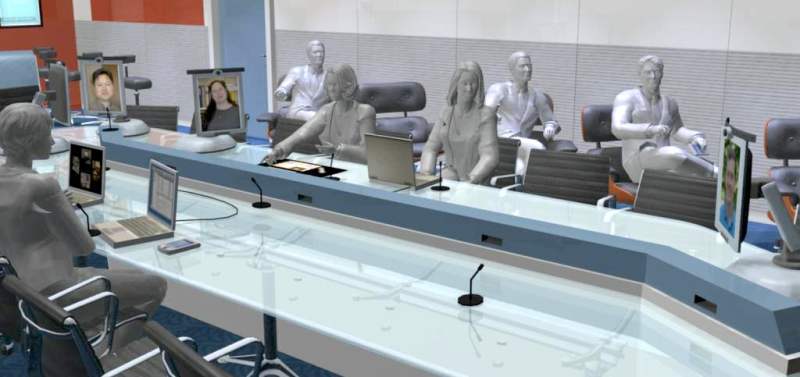VideoBots
The VideoBot system (2003) enhances the remote presence of teleconference participants. Each remote user is represented by a life-size “talking head” video display mounted on a robotic pedestal with three degrees of freedom. A video camera affixed to the display provides a local image to the remote participant. Moving the robotic display moves the camera in lockstep, and preserves the gaze affordances of face-to-face meetings, where people naturally perceive gaze direction by head orientation. Because the display and camera are mechanically linked, it is easy to tell where the remote participant is looking, because the display is pointed in that direction, which naturally cues local users to the remote user’s gaze direction. A high-quality video link delivers an exceptionally realistic face image and voice quality, increasing the realism and allowing subtle nuances of expression to be conveyed. In addition, the display can move dynamically to attract attention, change gaze direction, indicate degree and direction of interest, and even give motion cues like nodding and bowing.
More at http://www.fxpal.com/?p=videobots
US Patent 7,154,526, Telepresence system and method for video teleconferencing
Conceptual art by Surapong Lertsithichai; thanks to Tim Black at Quantalink and Conor McQuaid for help with design and mechanical fabrication and John Doherty for photography and videography assistance

